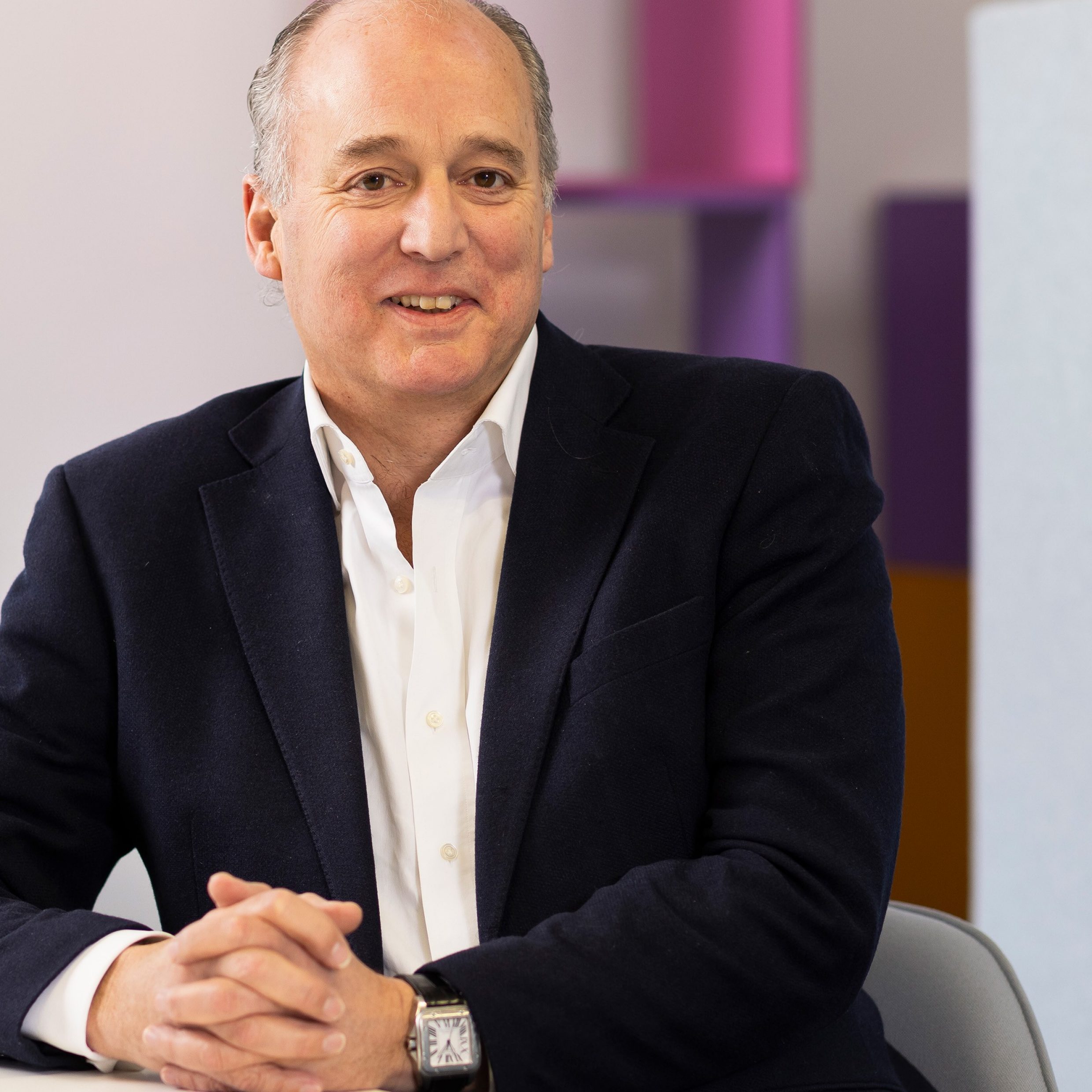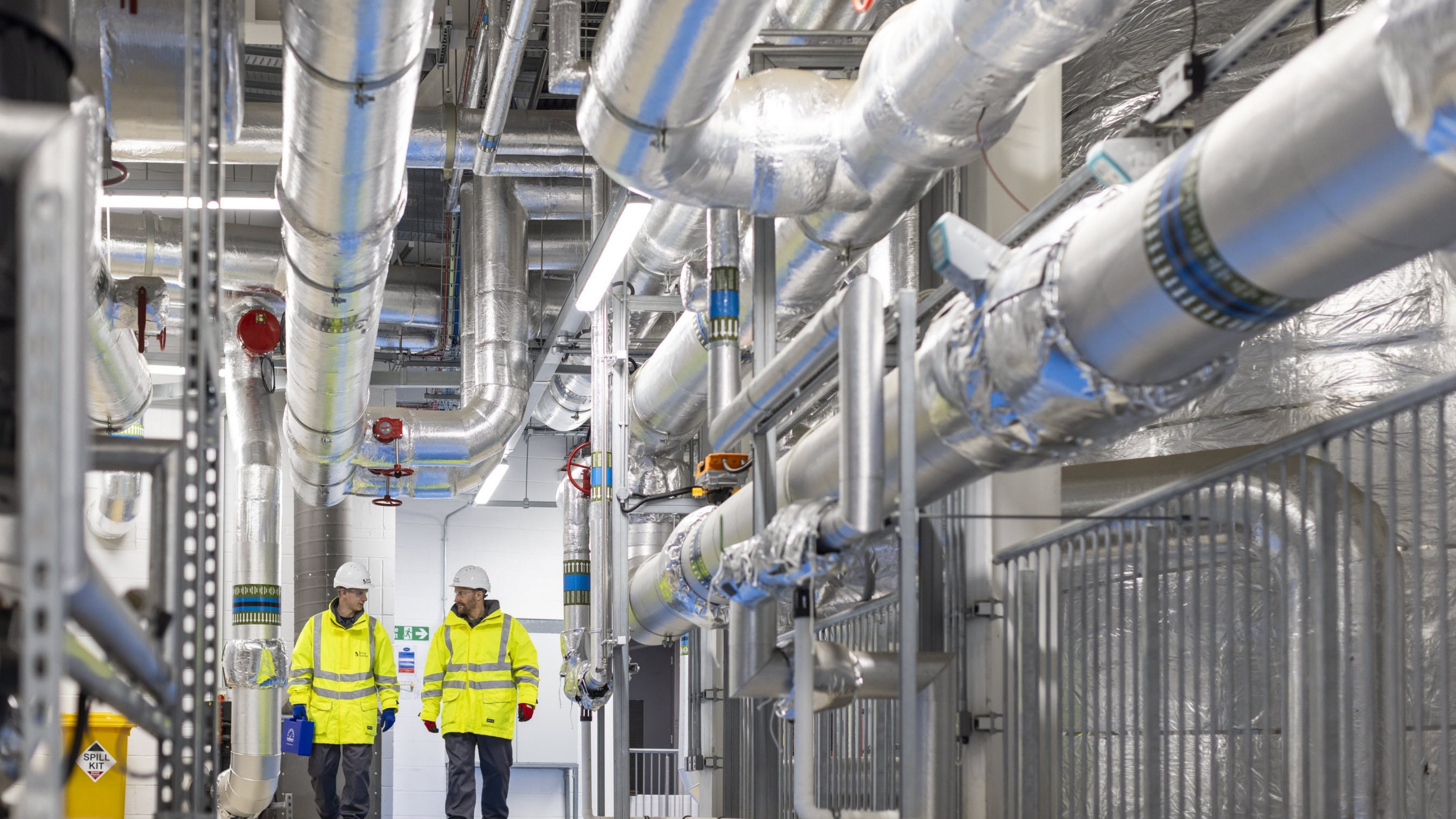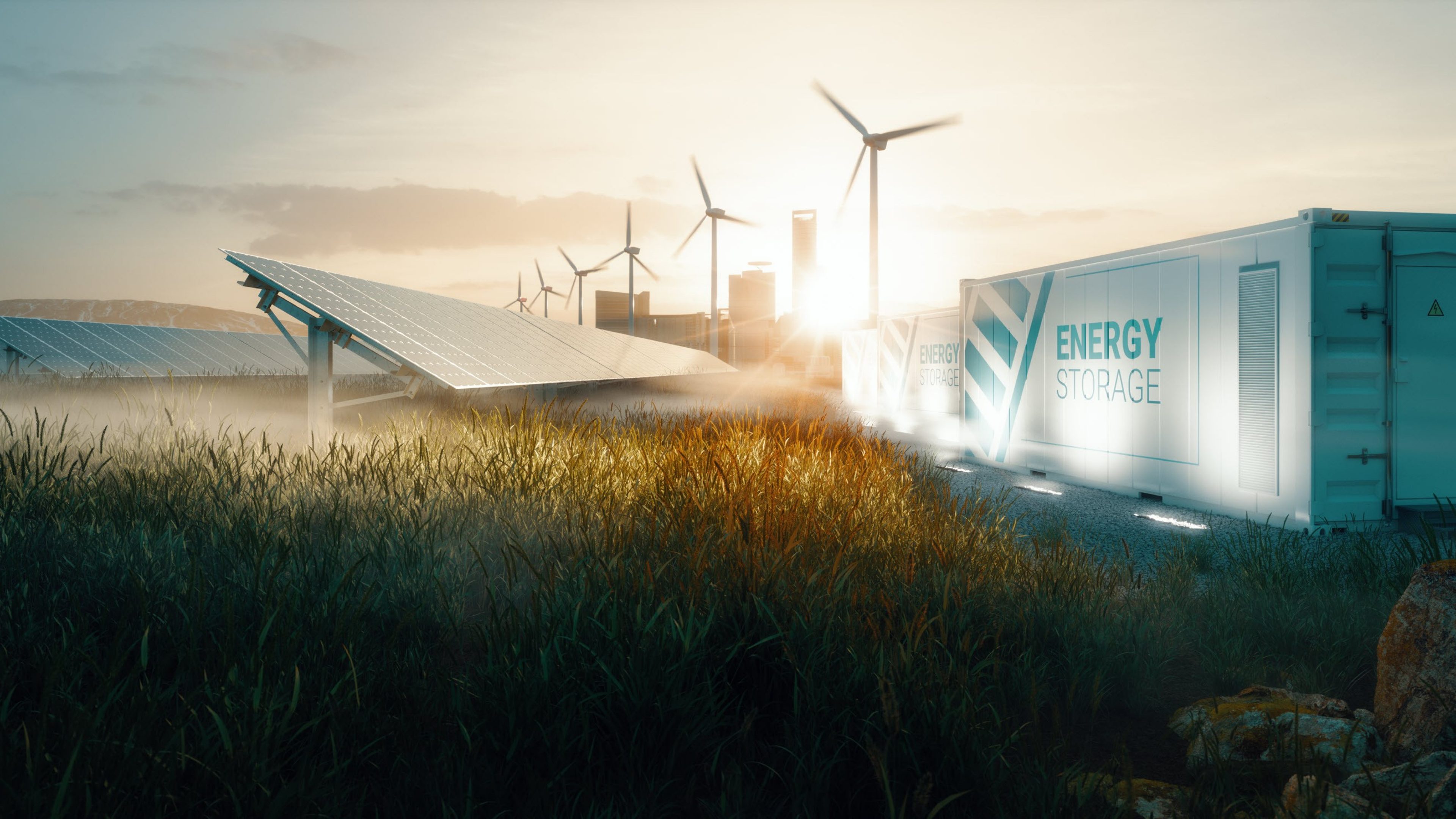In our interview, Richard Burrell, Executive Chairman of Bring Energy, talks about the heat networks that his company operates in major British cities. The focus is on expanding and developing the networks and on decarbonising the energy sources used to provide heating and cooling to those networks.
Bring Energy aims to provide people and businesses with sustainable heating and cooling across city-scale networks. That's what it says on your website. How would you describe your company in your own words?
Our vision is to provide heating and cooling to all of our networks, which are located in several major cities in the UK, in a way that benefits both the businesses based there and the residents who live there. We have a strong presence throughout the country, from Edinburgh down to Newcastle to Birmingham, Coventry, Leicester and Southampton and in places in London such as the Queen Elizabeth Olympic Park and Battersea Power Station. Our mission is to develop, own and operate heating and cooling generation plants and to manage distribution, selling heating and cooling to end customers. We are by far the largest operator of heat networks in the UK.
What are the advantages of heat networks compared to individual heating systems? And how
do you go about implementing them?
Heat networks unlock cost effective energy sources in cities, including waste heat, which benefits all bill payers. Heat networks lower the total system transformation cost to deliver net zero by reducing the peak power demand on local power networks, leaving more power capacity for electric vehicle charging, data centres and other power-hungry industries. City-scale heat networks can effectively operate as big heat batteries providing flexibility to power networks.
If each building has its own heat source or boiler, this means much more maintenance work per unit than if the heating/cooling is supplied to the buildings via a heat network. Another advantage of a heat network is that heat loads can be adapted flexibly to suit the different requirements of each building or major user at different times of the day and year, as it not only stores the heat, but also manages the heat loads and thus electricity required to generate the heat. In fact, heat networks can be used in a similar way to battery storage and can optimise loads on an interconnected system.
Of course, an appropriate pipe system is also necessary to distribute the energy. Bring Energy has this infrastructure in all the major cities in which it operates. Our growth strategy involves connecting all the buildings along these pipe networks, as well as expanding these pipes into different branches in order to increase the geographical coverage of the entire heat network within a city. To do this, it is also important to work together with the local authorities to coordinate which roads will be dug up in order to lay new pipes. That’s a challenge. However, the authorities and municipalities also have their own decarbonisation targets, so we are pushing through an open door.
Decarbonisation – the big issue of our time. How are you tackling it?
We are currently in a transitional period. At present, our heating and cooling networks run mainly on gas, although we also operate biomass heating and heat pumps at the Olympic Parc. Elsewhere, we are moving towards electrification and the use of other low-carbon and waste heat sources. We are therefore decarbonising step by step. Together with each of our local government partners, we are developing roadmaps tailored to their needs and net-zero ambitions.
When it comes to replacing gas, electric heat pumps are a good option. The energy to run these heat pumps comes from the national grid, which is also currently being decarbonised with the introduction of wind and solar power. We also see a great opportunity in the construction of data centres. Although they consume a lot of energy themselves, they also give off a lot of heat. It makes sense to make use of this heat and feed it into our networks. We have also had a good experience with another form of low-carbon energy generation in Coventry, for example, where we use the heat from an EFW (energy from waste) plant. Each city has its own solution for energy generation and decarbonisation. Our goal is to use whatever heat source we can to optimise our networks. We need to be flexible about what we choose, and how we approach it. Our aim is to have our entire network decarbonised by the 2040s, or earlier if possible.

Where do you see the major challenges on the road to net zero? Are they more technological, financial or social in nature? And how is Bring Energy handling them?
There are a number of technologies for producing decarbonised heat energy. However, if we want to move towards electrification, the electricity grid infrastructure poses one of the main challenges. Its availability and resilience are decisive for the various technologies to be used.
The second biggest challenge concerns the financial cost to the end customer. Switching from gas to lower-carbon sources is currently costly. This could change at any time, but until then the big question remains who is going to pay that cost? Although governments and local authorities do provide grants, government coffers are not exactly abundant. Investors, on the other hand, want to see a return on their capital. While end customers are in favour of decarbonised energy, they are also averse to higher tariffs. A decarbonisation roadmap is therefore essential. Start with those who can afford to pay higher tariffs, such as the big companies, and bring the residents on board at a later stage when some of the initial, more expensive equipment has been installed. Social aspects also play a role here; it’s a matter of social compatibility in the distribution of the costs of decarbonisation. It’s also about social responsibility.
It’s a balancing act between state support mechanism and higher tariffs. The financial aspect is a challenge. Ideally, we would develop a technology that is cheaper than gas. But gas prices in the UK are currently disproportionately cheaper than any other form of energy production, because their externalities such as emissions are not fully priced in. For this to change, fiscal and state intervention is required to rebalance the electricity cost of heat with heat produced from gas.
Our strategy is to do it in an incremental way based on the roadmaps created, and to decarbonise customer by customer so that we reach our net-zero target in the next 10 to 15 years.
Let’s take the Olympic Park in London as a specific example. Its gas consumption is currently around 85%, and should be completely switched to electricity and biomass by 2035. That sounds very ambitious. How are you going to do it?
It is indeed very ambitious, but the London Legacy Development Corporation and our local authority partners are very interested in the project. We have a very well-developed roadmap, and the authorities are supporting us. Nevertheless, I agree with you – it is ambitious. Regardless of whether we reach our target in 2030, 2035 or 2040, the most important thing is that we have a common roadmap that everyone is committed to. The key question, in addition to heat pumps, is whether we can tap into other low-carbon energy sources such as waste heat from data centres and heat from local EFW plants. So I think your scepticism is right. However, we have a plan and the local authorities are behind it. We will implement it as fast as possible. But decarbonisation is a challenge, and given the current gas prices, and the rising cost of living that is worrying people, it is particularly challenging. But this is currently a factor across the renewables industry. And people have got to be realistic.
What are your next steps?
Well, my immediate goals are to connect as many people and businesses in our cities to our existing heat networks as quickly as we can, whether decarbonised or not. At the same time, we want to lay additional pipelines to connect more customers. We aim to expand into new geographical areas adjacent to the areas where we are already present in order to reach more potential customers. In these new areas and cities, we can build new low-carbon generation as we are not saddled with the legacy of carbon-emitting generators, so we use low-carbon energy sources from day one.
Our growth strategy is threefold: to connect more customers to our existing networks, to expand our existing networks and to decarbonise our generation wherever we can.
Do you already have any plans to expand to the continent?
At the moment we have enough possibilities and enough to do here in the UK. I would never say never, but the growth opportunities in the UK are huge, as this country has traditionally had a coal-based heating system where everyone had a fireplace in their home or office. We’re moving away from that. The inner cities already have emissions regulations in place. So if you live in an apartment building in a city, you may have a faux fireplace, but not a traditional one. And this is precisely where the potential for heating and cooling networks lies. It’s a rapidly growing market.
Would you say that Bring Energy enables people to lead a self-determined, sustainable life?
Absolutely. We wouldn’t exist now or in the future if we didn’t enable our customers and stakeholders to benefit from sustainable energy production in a self-determined manner. We can use and offer decarbonised and sustainable energy sources with the existing networks. So the answer to your question is a very clear yes.
In January 2024, Swiss Life Asset Managers completed the acquisition of majority stake in the British district heating portfolio of Bring Energy and backs the company’s growth and decarbonisation efforts.
Swiss Life Asset Managers has a long investment horizon in infrastructure and combines industry knowledge with reliability and sustainability.




